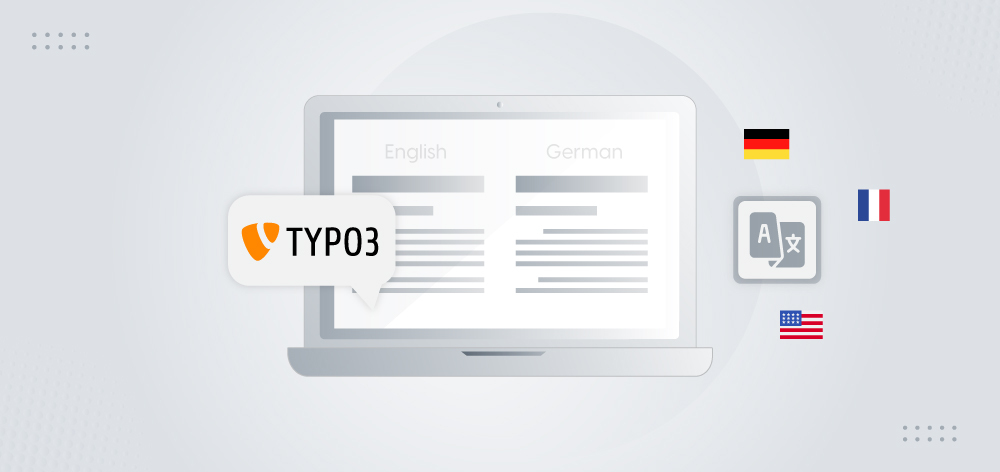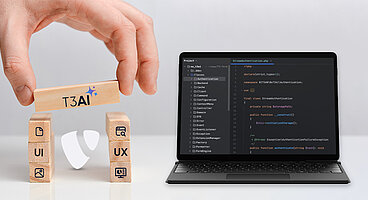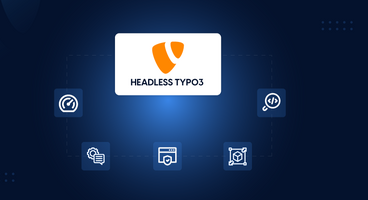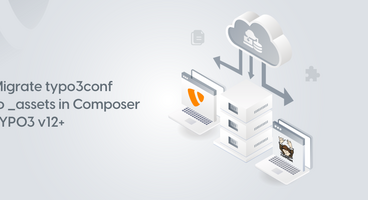TYPO3 as a content management system (CMS) is ideally suited for complex sites or businesses planning to scale up rapidly. One of the biggest perks of this open-source software is its ability to offer content in multiple languages seamlessly. The TYPO3 Translation and TYPO3 Localization extensions make an out-of-the-box web development system highly intuitive for multilingual content.
Because it’s rich in features, TYPO3 can have a learning curve, mainly when working on complex tasks like multilingual content management. Knowing the best ways to approach multiple languages on your site speeds up the process and gets pages live faster. Here are the best practices for managing multilingual content in TYPO3.
Know Your Audience
TYPO3’s benefits come from its ability to help web developers present content in multiple languages. Knowing what languages your audience speaks is the first step to using the software effectively.
Most sites start with a single language, such as German or English. Over time, as they attract more readers, it makes sense to translate the copy to their native tongues.
Also, consider the preferences of the majority accessing your page. For example, do they read from left to right, such as in German, Spanish and English? Or do you have many Asian readers who go from right to left? TYPO3 lets you select reading order.
Statista examined the most spoken languages globally, including as a second language. They found English was most common with 1.456 billion people, followed by Mandarin, Hindi and Spanish. You may encounter a few snafus between languages where one is left to right and the other is right to left, but you can fix most of these problems in the configuration.
Configure Language Settings
Multilingual support is crucial in a global marketplace, as companies now cater to more than just people in their area. In addition, local customers may speak multiple languages. The challenges sometimes occur when you need a different locale system language or a different version. For example, you might use German for Switzerland. You can utilize a two-letter country code to signify which version the server should show.
Go into Site Modules to specify the languages you wish to make active on your site, adding labels to show how each should perform. Your starting point is your root page, which works on the back end. Any changes you make to the root page should be reflected in the additional pages.
Root pages save you a lot of time and future effort. Picture your pages as a tree’s root system. Your homepage has a default language, but its roots might branch into English, Arabic, Chinese and French.
Translate Text
TYPO3 offers translation into over 85 languages. The program updates and improves continuously, ensuring the language is updated frequently. However, the program is only as good as your content. Some words are more challenging to translate than others. If in doubt, hire a native speaker to edit your pages and ensure no hidden meanings might offend readers.
The key to excellent translations is writing in clear, concise language. Avoid flowery phrasing or cultural cliches, and consider local accessibility guidelines.
How many languages should you offer for your readers? Dig into site analytics and see where your traffic comes from. While you can target a new location, make sure it’s worth your time. Is there potential for more revenue from the new language?
Pay attention to any regulations that might apply to your translations. For example, the United States has the Web Content Accessibility Guidelines 2.1, which is a national adopted accessibility standard that applies to a range of industries such as federal agencies and higher education. If your readers are in the U.S., your translation should comply. On the other hand, the European Union (EU) has its own set of regulations such as the General Data Regulation Protection Act, so you'll need to see if privacy concerns apply to your readers from EU countries.
You can also use some of the best content editing & publishing service providers which can help you easily manage and publish your content.
Create Separate URLs for Each Language
URLs for each language must be friendly to the country of origin — if someone from Australia pulls up a page, it should have a .au extension. Translation mode in TYPO3 gives you two options. You can translate, which will directly connect to the original. You can also copy content, keeping new pages independent from other languages.
One thing to remember is you should start with a root page, but you might expand into other pages that pertain more to the country in question. Imagine a product page where the product differs slightly between two countries. The root page might talk about the most common use of the item, but people in other countries begin using it in new ways local customers do not. You might add additional details only translated to the language in the area where people use the product in alternative ways.
As you add more content to your pages, things will likely change, get broken or make little sense to those in other countries. Choose a fallback behavior for fetching pages from the database. The beauty of fallback site handling is the page is presented only in the defined language rather than the default. So, if the page isn't available in German (Austria), it will default to German (Germany) so the reader has a shot at understanding the text.
Connect Original and Translated Pages
Using the root system connects multiple pages of the same content. When the original is updated, so is the translated page. Sometimes, you’ll want to separate pages with a copy, such as if you don’t want both pages to look the same. However, using the tree system will usually serve you best and keep your site current.
If you want to see how your pages relate to one another and what updates have been completed, adjust the view from the dashboard so you can navigate more easily. Which viewing option works best depends on your personal preferences, machine type and the number of pages you have in the system. Play around with it until you find the one that works for you.
You can also hit the button that reads "Localize all records'' to create inline elements from your default language to the current selection. Finally, adjust your view and hide pages if there aren't any translated copies. The new output makes viewing easier, as you gain more content and your navigational structure expands.
Around 60% of consumers demand a personalized experience before spending their money. Look for ways to present common information but make it personal to each individual based on their location and language.
Are you looking for Step by step guide on how to Translate & Localize Content in TYPO3? Read our detailed article on Guide to TYPO3 Translation & Localization (With Useful Extensions)
Test Language Switching
Thorough testing is crucial to ensure translations work as intended. Pull up each version and check the appearance, paying particular attention to any changes in reading preference. Does everything appear where it should? Moving things to the middle can sometimes fix errors in translating from left-to-right to right-to-left reading.
You should also consider the images and how they relate to the text. A photo of a woman in black might signal to some cultures that she is serious or grieving. Another culture might see black as a shade of celebration or good luck. Know the audience you’re speaking to so you can vary the images to make the most sense for that locality.
In addition, some visuals have text on top of them — you’ll need to adjust this to the visitor’s preferred language. You must create an image bank and change the TYPO3 setup to connect to a language image overlay. Fix the extTables.php file to display back-end data.
Conclusion
Managing multilingual content in TYPO3 requires attention to detail and planning for future growth. Best practices such as using elements specific to languages offer a smooth experience for global site visitors. Business is more international than ever, so finding ways to reach users in their native languages spurs growth and marks your company as knowledgeable about modern demands.














TYPO3's multilingual features are excellent. The Translation and Localization tools help us manage our content in multiple languages with ease. It’s a solid choice for anyone needing a reliable CMS for diverse language needs.
Must-read for anyone managing a multilingual TYPO3 site. The tips on optimizing translations and managing language variants are very useful. Great work!
I’ve been searching for a comprehensive guide on multilingual TYPO3 setups, and this blog delivered! The detailed steps and examples were incredibly helpful. Great job!